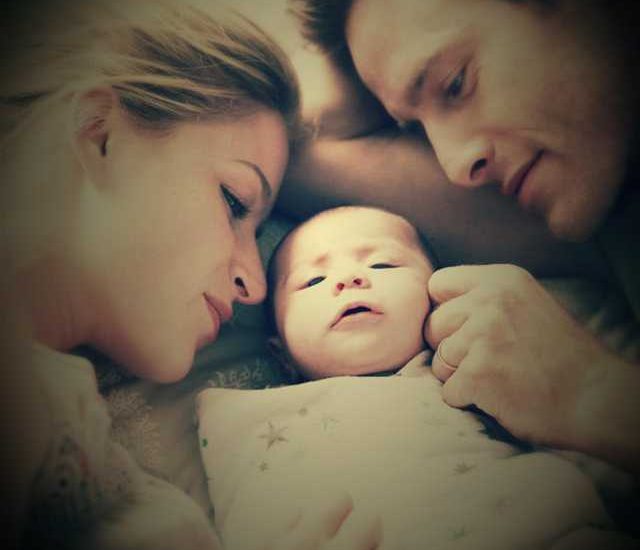Marriage is an age old tradition that celebrates love and union of two souls. It binds two hearts to each other with the thread of trust, respect and loyalty. Other qualities that make this thread stronger are supportive and encouraging nature of spouse, understanding and willingness to adjust to each others interests and finding innovative ways to keep the romantic spark alive. In India, marriage is not only considered union of two souls but union of two families. Marriage celebrations are grand affair and these moments are cherished forever.
When couples are blessed with a child, it marks a new beginning of their life. Arrival of bundle of joy brings in buckets of peace, joy and euphoria. It’s a moment couples wait eagerly for. But unfortunately due to some medical reason, all couples are not blessed with child. But that does not mean they can never ever enjoy parenthood. Medical science has advanced and infertility treatments have proved boon to couples who find it difficult to conceive. IVF treatment is one solution you can definitely look out for.
Let us understand what exactly is IVF treatment and its procedure.
What is IVF treatment?
To conceive a baby, male gamete (sperms) have to be transferred into females body to unite with female gamete (egg) through intercourse. Union of these two gametes is called fertilization. Fertilization results in formation of zygote- unicellular life that will eventually develop into a baby. This zygote is attached to uterus i.e. womb and is fed regularly through umbilical cord. Mother delivers baby after gestation period of nine months,. This is the process of natural conception of baby.
IVF (In Vitro Fertilization) treatment comes into practice when couples are not able to conceive naturally. It is a treatment wherein baby is conceived outside mothers womb. Egg from females body is united with sperm from males body in an artificial environment in laboratory and zygote thus formed is developed in incubator. Later on, embryos are transferred into females body for further development. Sometimes, more than one egg is collected and several embryos are developed. More than one embryo is transferred into females body to reduce the chances of unsuccessful conception. But, many doctors are not advising use of this method as it can result in multiple pregnancies. Only one embryo is transferred into mothers womb and other embryos are kept frozen. Almost all centers that provide IVF treatment have provision for frozen embryos.
How is IVF carried out?
IVF can be carried out in four simple steps- hormone therapy to stimulate production of eggs, retrieval of eggs, fertilization and lastly embryo implantation. Let us study each of these steps in detail.
- Hormone therapy: It is the first step in IVF treatment. In this step, doctors will give you certain medications to regulate hormone production and to ensure egg production in ovaries. The timing as in when egg will be released is also estimated in this step. More the number of eggs produced, more are the chances of success. If there is a problem in egg production, you can consult with doctor and search for egg donor.
- Retrieval of eggs: When eggs are produced, it is time to retrieve them. This procedure is carried out using anesthesia. A very thin needle is inserted into upper vaginal tissue and follicles are removed using ultrasound and gentle suction method. The egg is then immediately separated from follicular fluid and placed in synthetically created nutrient rich environment and then transferred to incubator.
- Fertilization: After retrieval of eggs, fertilization takes place with the help of sperm sample given by your partner or donor. The most healthiest and active sperm is mixed with egg in a special environment. Sometimes, sperm is directly injected into the egg to accelerate fertilization process. Fertilized egg is placed in incubator to monitor development of embryo. If healthy embryo is developed, chances of it in developing into healthy baby are high. Special attention has to be provided in case of weak embryos.
- Implantation: It is the last step of IVF treatment. Embryos are transferred into mothers womb where they get appropriate nutrients and warmth for further development. A small speculum is placed into vagina and embryos are transferred via a plastic tube placed through cervix and ultimately to uterine cavity (womb). Doctor recommends the lady to take minimum 24 hours bed rest for successful result.
IVF treatment is little bit expensive and sometimes may not give desired results. Couples should opt for IVF treatment after trying one year consistently for baby. Many centers in India provide IVF treatment. To know more about these centers and IVF treatment cost in India, here.
You can also reach out for online counseling.
Author Bio:
Pousali is an M.Phil in English literature and likes to explore genres related to arts and aesthetics. She is an ardent believer of the ‘learning, unlearning and relearning’ process. She truly enjoys knowing and writing on different concepts.





